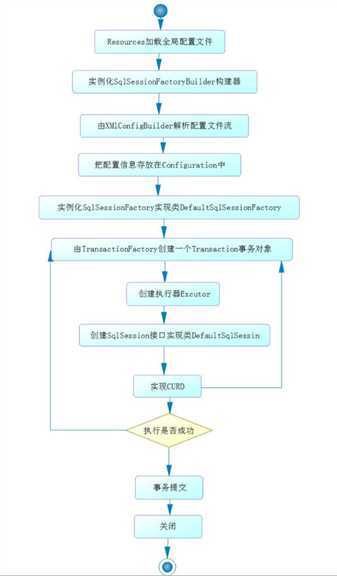1.Mybatis 实现多表查询方式
1)业务装配.对两个表编写单表查询语句,在业务(Service)把查询的两个结果进行关联.
2)使用AutoMapping特性,在实现两表联合查询时通过别名完成映射.
3)使用 MyBatis 的<resultMap>标签进行实现.
2.多表查询时,类中包含另一个类的对象的分类
1)单个对象
2)集合对象
1. <resultMap>标签写在mapper.xml中,由程序员控制SQL查询结果与实体类的映射关系.
默认 MyBatis 使用 AutoMapping 特性.
2. 使用<resultMap>标签时,<select>标签不写 resultType 属性,而是使用 resultMap 属性引用<resultMap>标签.
3. 使用 resultMap 实现单表映射关系
1)数据库设计
表名:teacher 表字段:id , name
2)实体类设计
public class Teacher{ private int id1; private String name1; }
3)mapper.xml代码
<resultMap type="teacher" id="mymap"> <!-- 主键使用 id 标签配置映射关系 --> <id column="id" property="id1" /> <!-- 其他列使用 result 标签配置映射关系 --> <result column="name" property="name1"/> </resultMap> <select id="selAll" resultMap="mymap"> select * from teacher </select>
4. 使用 resultMap 实现关联单个对象(N+1 方式)
1)N+1 查询方式,先查询出某个表的全部信息,根据这个表的信息查询另一个表的信息.
2)与业务装配的区别:
在 service 里面写的代码,由 mybatis 完成装配
3)实现步骤:
在 Student 实现类中包含了一个 Teacher 对象
public class Student { private int id; private String name; private int age; private int tid; private Teacher teacher;
在 TeacherMapper 中提供一个查询
<select id="selById" resultType="teacher" parameterType="int"> select * from teacher where id=#{0} </select>
在 StudentMapper 中
<association> 装配一个对象时使用
property: 对象在类中的属性名
select:通过哪个查询查询出这个对象的信息
column: 把当前表的哪个列的值做为参数传递给另一个查询
<resultMap type="student" id="stuMap"> <id property="id" column="id"/> <result property="name" column="name"/> <result property="age" column="age"/> <result property="tid" column="tid"/> <!-- 如果关联一个对象 --> <association property="teacher" select="com.su.mapper.TeacherMapper.selById" column="tid"></association> </resultMap> <select id="selAll" resultMap="stuMap"> select * from student </select>
大前提使用 N+1 方式.时如果列名和属性名相同可以不配置,使用 Automapping 特性.但是 mybatis 默认只会给列装配一次。把上面代码简化成:
<resultMap type="student" id="stuMap"> <result property="tid" column="tid"/> <!-- 如果关联一个对象 --> <association property="teacher" select="com.su.mapper.TeacherMapper.selById" column="tid"></association> </resultMap> <select id="selAll" resultMap="stuMap"> select * from student </select>
5. 使用 resultMap 实现关联单个对象(联合查询方式)
1)只需要编写一个 SQL,在 StudentMapper 中添加下面效果
<association/>只要专配一个对象就用这个标签
此时把<association/>小的<resultMap>看待
javaType 属性:<association/>装配完后返回一个什么类型的对象.取值是一个类(或类的别名)
<resultMap type="Student" id="stuMap1"> <id column="sid" property="id"/> <result column="sname" property="name"/> <result column="age" property="age"/> <result column="tid" property="tid"/> <association property="teacher" javaType="Teacher" > <id column="tid" property="id"/> <result column="tname" property="name"/> </association> </resultMap> <select id="selAll1" resultMap="stuMap1"> select s.id sid,s.name sname,age age,t.id tid,t.name tname FROM student s left outer join teacher t on s.tid=t.id </select>
6. N+1 方式和联合查询方式对比
1)N+1:需求不确定时.
2)联合查询:需求中确定查询时两个表一定都查询.
7. N+1 名称由来
1)举例:学生中有 3 条数据
需求:查询所有学生信息级授课老师信息
需要执行的 SQL 命令:
查询全部学生信息:select * from 学生
执行 3 遍 select * from 老师 where id=学生的外键
使用多条 SQl 命令查询两表数据时,如果希望把需要的数据都查询出来,需要执行 N+1 条 SQL才能把所有数据库查询出来.
2)缺点:效率低
3)优点:
如果有的时候不需要查询学生时同时查询老师.只需要执行一个 select * from student;
4)适用场景: 有的时候需要查询学生同时查询老师,有的时候只需要查询学生.
5)如何解决 N+1 查询带来的效率低的问题:
默认带的前提: 每次都是两个都查询.使用两表联合查询.
1. 在 Teacher 中添加 List<Student>
public class Teacher { private int id; private String name; private List<Student> list;
2. 在 StudentMapper.xml 中添加通过 tid 查询
<select id="selByTid" parameterType="int" resultType="student"> select * from student where tid=#{0} </select>
3. 在 TeacherMapper.xml 中添加查询全部
<collection/> 当属性是集合类型时使用的标签.
<resultMap type="teacher" id="mymap"> <id column="id" property="id"/> <result column="name" property="name"/> <collection property="list" select="com.su.mapper.StudentMapper.selByTid" column="id"></collection> </resultMap> <select id="selAll" resultMap="mymap"> select * from teacher </select>
1.在 teacherMapper.xml 中添加
1)mybatis 可以通过主键判断对象是否被加载过.
2)不需要担心创建重复 Teacher
<resultMap type="teacher" id="mymap1"> <id column="tid" property="id"/> <result column="tname" property="name"/> <collection property="list" ofType="student" > <id column="sid" property="id"/> <result column="sname" property="name"/> <result column="age" property="age"/> <result column="tid" property="tid"/> </collection> </resultMap> <select id="selAll1" resultMap="mymap1"> select t.id tid,t.name tname,s.id sid,s.name sname,age,tid from teacher t LEFT JOIN student s on t.id=s.tid; </select>
1.只能使用多表联合查询方式.
2.要求:查询出的列名和属性名相同.
3.实现方式
1)在 SQL 是关键字符,两侧添加反单引号
<select id="selAll" resultType="student"> select t.id `teacher.id`,t.name `teacher.name`,s.id id,s.name name,age,tid from student s LEFT JOIN teacher t on t.id=s.tid </select>
1. 注解:为了简化配置文件.
2. Mybatis 的注解简化 mapper.xml 文件.
如果涉及动态 SQL 依然使用 mapper.xml
3. mapper.xml 和注解可以共存.
4. 使用注解时 mybatis.xml 中<mappers>使用
<package/>
<mapper class="com.su.mapper.TeacherMapper"/> :接口名
5. 实现查询
在TeacherMapper接口:
@Select("select * from teacher")
List<Teacher> selAll();
6. 实现新增
在TeacherMapper接口:
@Insert("insert into teacher values(default,#{name})")
int insTeacher(Teacher teacher);
7. 实现修改
在TeacherMapper接口:
@Update("update teacher set name=#{name} where id=#{id}")
int updTeacher(Teacher teacher);
8. 实现删除
在TeacherMapper接口:
@Delete("delete from teacher where id=#{0}")
int delById(int id);
9. 使用注解实现<resultMap>功能
1)以 N+1 举例
2)在 StudentMapper 接口添加查询
@Select("select * from student where tid=#{0}")
List<Student> selByTid(int tid);
3)在 TeacherMapper 接口添加
@Results() 相当于<resultMap>
@Result() 相当于<id/>或<result/>
@Result(id=true) 相当与<id/>
@Many() 相当于<collection/>
@One() 相当于<association/>
@Results(value={ @Result(id=true,property="id",column="id"), @Result(property="name",column="name"), @Result(property="list",column="id",many=@Many(select="com.su.mapper.StudentMapper.selByTid")) }) @Select("select * from teacher") List<Teacher> selTeacher();
1. 运行过程中涉及到的类
ResourcesMyBatis 中 IO 流的工具类
加载配置文件
SqlSessionFactoryBuilder() 构建器
作用:创建 SqlSessionFactory 接口的实现类
XMLConfigBuilder MyBatis 全局配置文件内容构建器类
作用负责读取流内容并转换为 JAVA 代码.
Configuration 封装了全局配置文件所有配置信息.
全局配置文件内容存放在 Configuration 中
DefaultSqlSessionFactory 是SqlSessionFactory接口的实现类
Transaction 事务类
每一个 SqlSession 会带有一个 Transaction 对象.
TransactionFactory 事务工厂
负责生产 Transaction
Executor MyBatis 执行器
作用:负责执行 SQL 命令
相当于 JDBC 中 statement 对象(或 PreparedStatement或 CallableStatement)
默认的执行器 SimpleExcutor
批量操作 BatchExcutor
通过 openSession(参数控制)
DefaultSqlSession 是 SqlSession 接口的实现类
ExceptionFactoryMyBatis 中异常工厂
2. 流程图

3.文字解释
在 MyBatis 运行开始时需要先通过 Resources 加载全局配置文件.
下面需要实例化 SqlSessionFactoryBuilder 构建器.帮助 SqlSessionFactory 接口实现类 DefaultSqlSessionFactory.
在实例化 DefaultSqlSessionFactory 之前需要先创建 XmlConfigBuilder解析全局配置文件流,并把解析结果存放在 Configuration 中.之后把Configuratin 传递给 DefaultSqlSessionFactory.到此 SqlSessionFactory 工厂创建成功.
由 SqlSessionFactory 工厂创建 SqlSession.
每次创建 SqlSession 时,都需要由 TransactionFactory 创建 Transaction对象,同时还需要创建 SqlSession 的执行器 Excutor,最后实例化DefaultSqlSession,传递给 SqlSession 接口.
根据项目需求使用 SqlSession 接口中的 API 完成具体的事务操作.
如果事务执行失败,需要进行 rollback 回滚事务.
如果事务执行成功提交给数据库.关闭 SqlSession
到此就是 MyBatis 的运行原理.
原文:https://www.cnblogs.com/sunny-sml/p/12639661.html